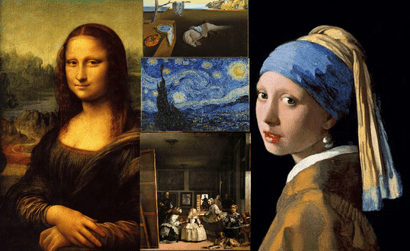In this article, we made a selection of the most famous paintings in the world – the masterpieces of world art, which are familiar to every inhabitant of planet Earth. Our civilization has produced hundreds of the greatest artists who painted thousands of beautiful pictures, but even among the best of the best, there are those about which everyone knows – even to infinitely distant from art people.
As it happens, these paintings have transcended the boundaries of painting itself, becoming an integral part of the cultural heritage of humanity in general. They exist as an objective reality – like the Sun or the Moon, and it is impossible to imagine our life without them.
So, the most famous paintings in the world!
1. The Birth of Venus – Sandro Botticelli
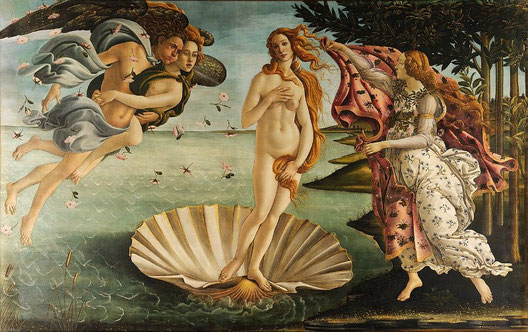
Sandro Botticelli’s The Birth of Venus (presumably 1485) in the Uffizi Gallery in Florence is not only one of the most famous, but also one of the most sensual works of world art. Lorenzo di Pierfrancesco de’ Medici was a cousin of Lorenzo the Magnificent, Duke of Florence.
Among Botticelli’s exceptional innovations, perhaps the most important was the use of canvas, rather than board, for a work of such large size (172.5 x 278.5 cm).
The artist added a minimal amount of fat to the pigments, so that the canvas remained strong and supple for a long time, and the paint did not crack. In addition, it was found that Botticelli applied a protective layer of egg yolk to the painting, which ensured that The Birth of Venus was well preserved.
2. Mona Lisa, by Leonardo da Vinci
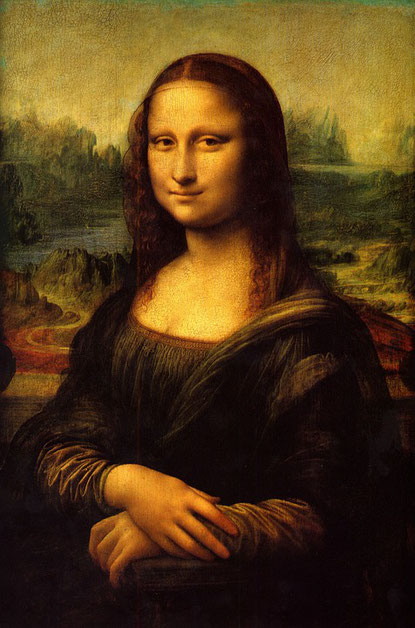
Yes, we can’t do without Leonardo and at least a couple or three of his works – who would doubt it! And the most famous of all his works is, of course, the Mona Lisa, or Gioconda! Da Vinci is said to have begun painting the picture in 1503 or 1504 in Florence, Italy, and it took him as long as 4 years to complete it, despite the small size of the piece. However, no clear information about exactly when the painting was completed has been preserved.
Although the Louvre – the world’s largest art museum and historical monument that displays the original Mona Lisa – says that the Mona Lisa was painted between 1503 and 1506, some historians and Leonardo experts say that the painting could not have been painted before 1513. This question, however, remains open.
It is believed that the woman depicted in the painting is an Italian noblewoman named Lisa del Giocondo, the wife of a wealthy Florentine silk merchant named Francesco del Giocondo. The painting was commissioned for their new home and to celebrate the birth of their second son Andrea.
3. The Last Supper – Leonardo da Vinci
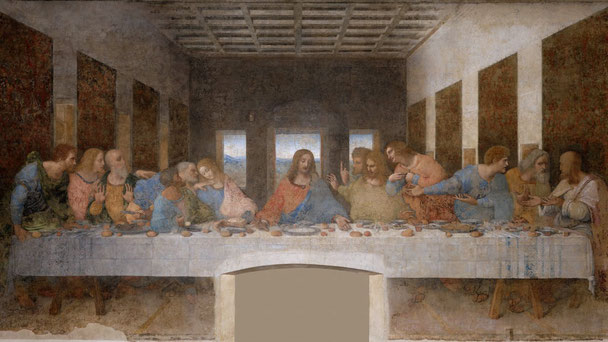
“Leonardo da Vinci’s The Last Supper is one of the most respected, most studied and most reproduced paintings our world has ever produced. Books, films, paintings, music and conspiracy theories have been devoted to it. The Last Supper has been surrounded by as many speculations and legends as its creator, the brilliant “orchestral man Leonardo da Vinci”.
4. The Sistine Madonna by Raphael Santi
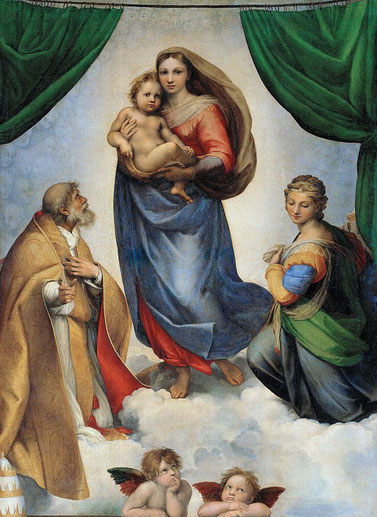
The “Sistine Madonna” (Italian: Madonna Sistina) is a painting by Raphael that has been in the Old Masters Gallery in Dresden since 1754. It belongs to the universally recognized pinnacles of the High Renaissance and is rightly considered one of the most famous paintings in the world. Huge in size (265 × 196 cm, so designated in the catalog of the Dresden gallery), the canvas was created by Raphael for the altar of the church of the monastery of St. Sixtus II in Piacenza, commissioned by Pope Julius II.
What is very unusual for the beginning of the XVI century, the material was not a board, and the canvas. This may indicate that the canvas was planned to be used as a banner (if only the choice of material is not explained by the large size of the work).
In the 18th century a legend spread (not confirmed by historical documents) that Julius II commissioned a canvas from Raphael for his tomb, and that the model for the Madonna was Raphael’s beloved Fornarina, for St. Sixtus by Pope Julius himself (nephew of Sixtus IV), and for St. Barbara by his niece Giulia Orsini. Proponents of the theory that the canvas was created for the papal tomb emphasize that the acorns on the riza of Sixtus II clearly refer to these two popes of the della Rovere (rovere means “oak”) family.
5. The Creation of Adam – Michelangelo
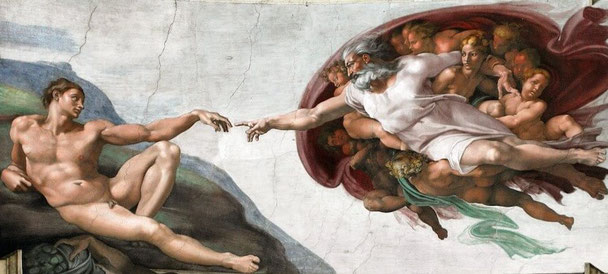
“The Creation of Adam (Italian: La creazione di Adamo) is a famous fresco by Michelangelo, painted around 1511 during the master’s work on the walls and vaults of the Sistine Chapel.
It should be noted that Michelangelo’s depiction of God in his frescoes was one of the first of its kind. Michelangelo really pioneered this kind of visualization of the Supreme Being.
God the Father was depicted by the artist as a grand old man with long white hair and a beard, an image that over time became very common. It is hard to believe today, but before Michelangelo no one had depicted God in this way.
6. Impression, Sunrise – Claude Monet
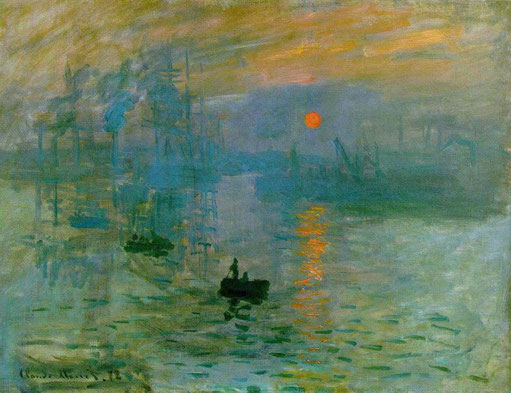
There are few paintings in the history of painting that would give their name to an entire movement.
Claude Monet’s painting “Impression. Sunrise” (1872) is just such a case. Anyone, even the most distant from art, must have heard of such a movement in painting as Impressionism, because it is impossible not to hear about it.
It is the most avant-garde breakthrough in 19th-century art, a veritable revolution, which just so happens to be named after this very small (48cm x 63cm) and, at first glance, rather plain painting by Monet, whose title in the original is: Impression, soleil levant (French).
7. The Garden of Earthly Delights – Hieronymus Bosch
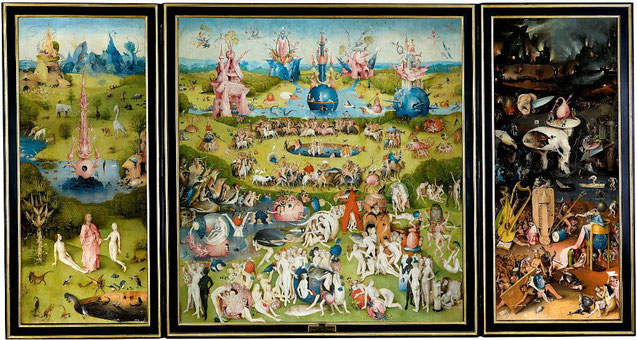
“The Garden of Earthly Delights is the most famous and most monumental triptych by Hieronymus Bosch, painted by the artist between 1500 and 1510 and currently housed in the remarkable Museo del Prado in Madrid.
The vast space of the triptych (389 x 220 cm) is literally filled with transparent figures, fantastical constructions, monsters, hallucinations in the flesh, demonic caricatures of reality – this is one of those works, the detailed consideration of which will take at least a month, and to make sense of it may even take a lifetime!
The phantasmagoric world created by Bosch absolutely does not fit into the framework of any existing religion. It horrifies and attracts simultaneously anyone lucky enough to see the triptych in the original, and Bosch’s depicted scenes and characters have long been “cited,” which only contributes to the popularity of this masterpiece.
8. Christ Carrying the Cross – El Greco
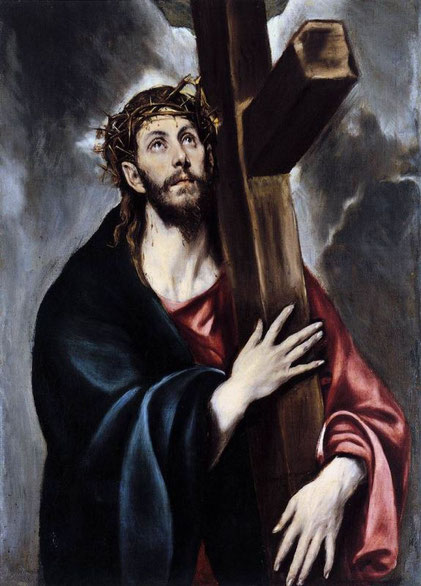
El Greco made at least seven copies of Christ Carrying the Cross in all, which demonstrates both the importance of this work to the artist himself and its incredible popularity during El Greco’s lifetime. In our opinion, it is one of El Greco’s finest works, if not his best.
The reason may be that here El Greco focused primarily not on the divine but on the human hypostasis of Christ, which makes the picture really touching.
The tear-filled eyes of Jesus turned to his heavenly Father express both a plea for mercy and a request to accept his sacrifice for the salvation of sinful humanity. It is this weakness of Christ, which makes him so close to us humans, that paradoxically makes us fully understand the divine nature of Jesus.
9. Las Meninas – Diego Velazquez
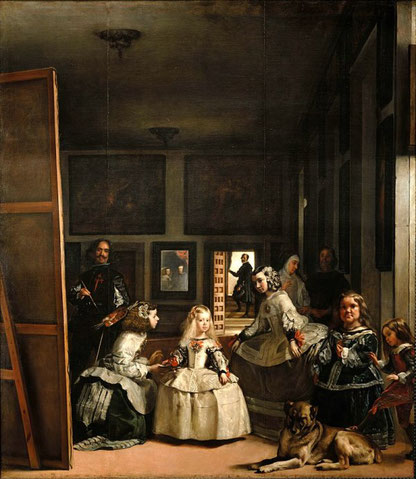
“The Meninas” (Las Meninas), or “The Family of Philip IV” is a painting by Diego Velázquez painted in 1656. The painting, now kept in the Museo del Prado (Madrid), is considered one of the most famous works of art in the world.
The canvas depicts Velázquez painting a joint portrait of King Philip IV of Spain with his wife and niece Mariana of Austria in the presence of their daughter, the Infanta Margarita Teresa, and her entourage. The painting’s complex and enigmatic composition raises questions about illusion and reality, as well as the uncertainty of the connection between the viewer and the characters.
Nowadays the Meninies are considered one of the most significant and most fully studied paintings in the history of Western art. According to Luca Giordano, the painting is “a theology of painting,” and Sir Thomas Lawrence, president of the Royal Academy of Arts, called it “the true philosophy of art.
Moreover, this monumental canvas (318 x 276 cm) is considered the supreme achievement of Velázquez himself and is seen as “a self-conscious and carefully calibrated demonstration of the limits of painting; perhaps the most profound statement of its possibilities ever made.”
10. Girl with a Pearl Earring – Johannes Vermeer
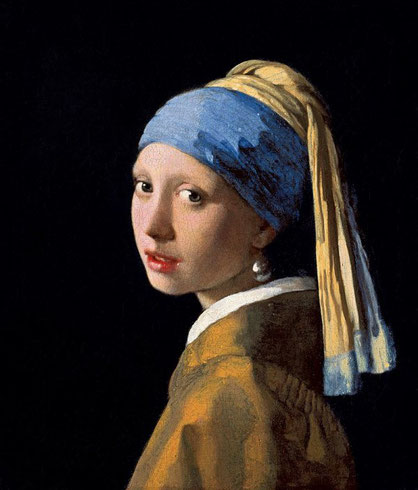
Dutch painter Jan Vermeer’s The Girl with the Pearl Earring (1665) in the Mauritshuis Museum (The Hague, Netherlands) is often compared to the Mona Lisa, which, in terms of the popularity of this work, is entirely justified.
Apart from the stylistic differences, technically the Girl with a Pearl Earring is not even a portrait, but a “throny” – the Dutch word for a picture of a person’s head, but not a full-fledged portrait. Interestingly, in 1881 at an auction in The Hague, the painting was purchased for a mere two guilders and thirty cents!
Between 2012 and 2014, while Mauritshuis was undergoing restoration, The Girl with the Pearl Earring toured the United States, Italy, and Japan, attracting huge crowds everywhere, which finally established her as one of the most famous paintings in the world.
11. The Ninth Wave – Ivan Aivazovsky
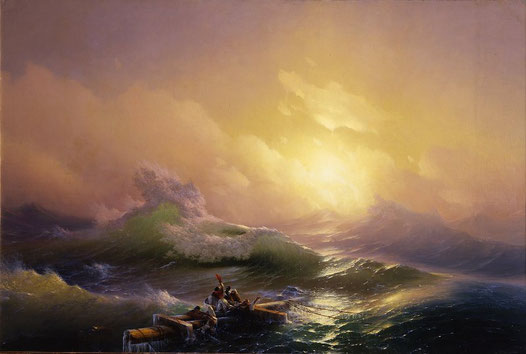
The most famous of Ivan Aivazovsky’s paintings, painted by him in 1850, is now kept in the State Russian Museum (St. Petersburg).
One can argue that the scallops of foam at the tops of the waves do not appear in the open waters – this will not change the obvious fact: of all the pictures of marine painters painted over the past 300 years, none can be compared either in skill or in impact on the viewer, or in fame with Aivazovsky’s “The Ninth Shaft”.
Interestingly, in 1857 the artist painted a copy of his monumental canvas (221 x 332 cm), the dimensions of which were only 28 x 42.2 cm. At the moment this miniature author’s replica is kept in the State Museum of Altai Territory.
12. Starry Night – Vincent van Gogh
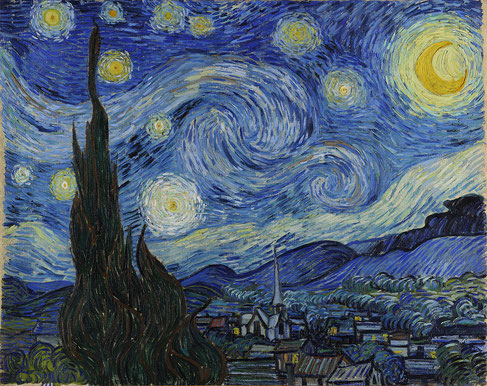
“Starry Night (1889) is not just one of the paintings of Post-Impressionism, and not just one of the most prominent representative of that movement–Vincent Van Gogh. “Starry Night is perhaps the Dutch artist’s most famous painting, the fame of which has gone far beyond the limited club of art lovers to become a universal treasure – as happened, for example, with Paul Cézanne’s The Card Players or Salvador Dali’s The Permanent Memory.
Van Gogh painted Starry Night in 1889, nursing “psychic wounds” after a famous conflict with Paul Gauguin in the Saint-Paul de Mosol (Saint-Rémy-de-Provence) asylum for the mentally ill.
Despite his stay in the “yellow house” – the saddest place on Earth – Van Gogh felt a burst of creative energy and wrote a lot, creating, among other things, the well-known painting “Irises”, which today is among the most expensive paintings in the world.
13. The Black Square – Kazimir Malevich
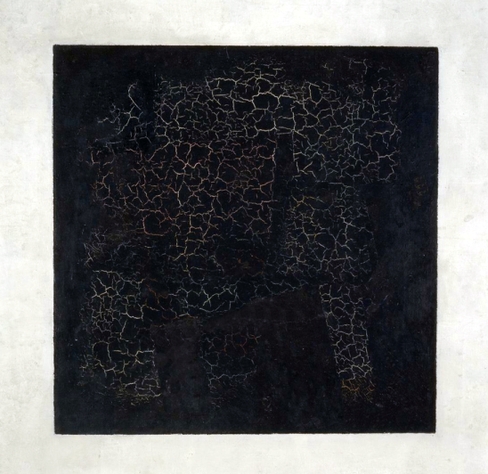
“The Black Suprematist square”, painted by Kazimir Malevich in 1915, is a bit out of the ordinary: it is difficult to call it “beautiful” if we wish, but the fact remains that “The Black Square” is one of the most famous paintings in the entire history of painting.
You can be as angry as you want about the squalor of this work and “the greatest trickery in the history of world art,” which is “The Black Square,” but please name me at least one person who has not heard of “The Black Square” – and then let me not believe you. Whether Malevich’s Suprematist square is beautiful or horrible is a matter of taste, but it was and remains one of the most discussed works of all time.
14. The Kiss – Gustav Klimt
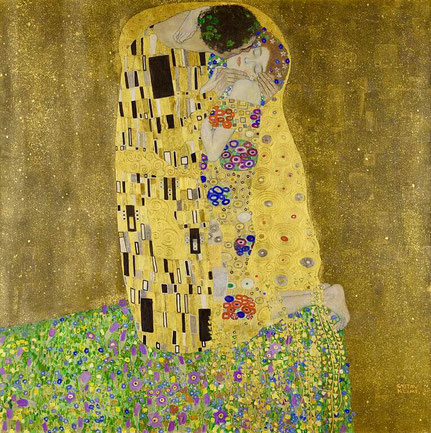
“The Kiss” is a painting by the Austrian artist Gustav Klimt in 1908 and is currently on view in the Belvedere Gallery in Vienna. Paradoxically, Klimt’s most famous work and one of the most famous paintings in the world in general, was absolutely “harmless” in the context of the rest of the artist’s work, which seems to literally breathe chastity – or is it only “seems”?
However, Klimt deliberately forces the viewer to perceive the subject in this way.
15. The Scream – Edvard Munch
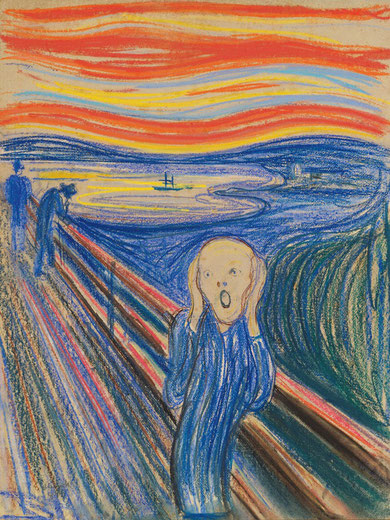
“The Scream is the established name in the popular perception of not one, but a whole series of works by the Norwegian expressionist Edvard Munch, created by the artist between 1895 and 1910.
One of the versions of The Scream made in 1895 (cardboard pastel) became very famous after it was sold at Sotheby’s in 2012 for 120,000,000 dollars, an all-time auction record.
The main character of The Scream, which resembles both an embryo and a skull and sperm, wrapped his arms around his head in terror and agony, has become, as they say now, “a cult” and has received numerous interpretations in popular culture, becoming a kind of symbol of absolute horror, agony and anxiety, in which the human being remains.
16. Guernica – Pablo Picasso
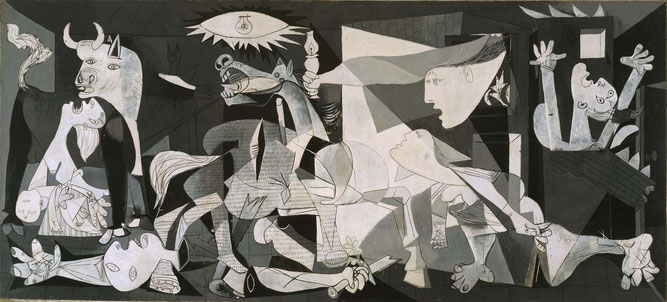
Guernica is one of the most famous paintings by Pablo Picasso, painted between May and June 1937 and now belonging to the collection of the Museo Reina Sofía in Madrid. The title of the painting is a direct reference to the Bomardization of the Basque town of Guernica by the forces of the German Legion Condor on April 26, 1937 during the Spanish Civil War.
The painting was commissioned by Picasso by the government of the Second Spanish Republic to be exhibited in the Spanish pavilion during the 1937 International Exhibition in Paris to draw public attention to the plight of the Republicans.
In the 1940s, when General Franco’s military dictatorship was established in Spain, Pablo Picasso chose to keep the painting in the Museum of Modern Art in New York, expressing his intention to return Guernica to Spain only after the country had restored democratic order.
17. The Persistence of Memory – Salvador Dali
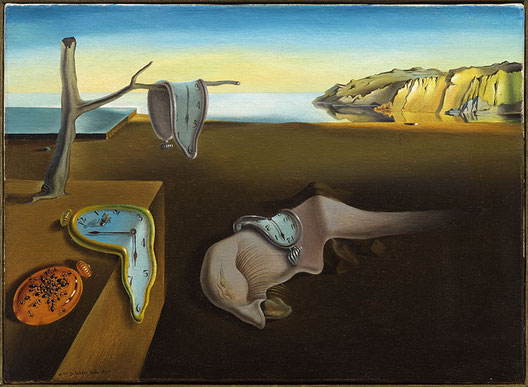
When, in the year 1931, the artist painted this unimpressive size canvas (the canvas measures only 24 X 33 cm), he must not have imagined that the image of his “soft clock” would become known to everyone on planet Earth – including those who are infinitely distant from art.






